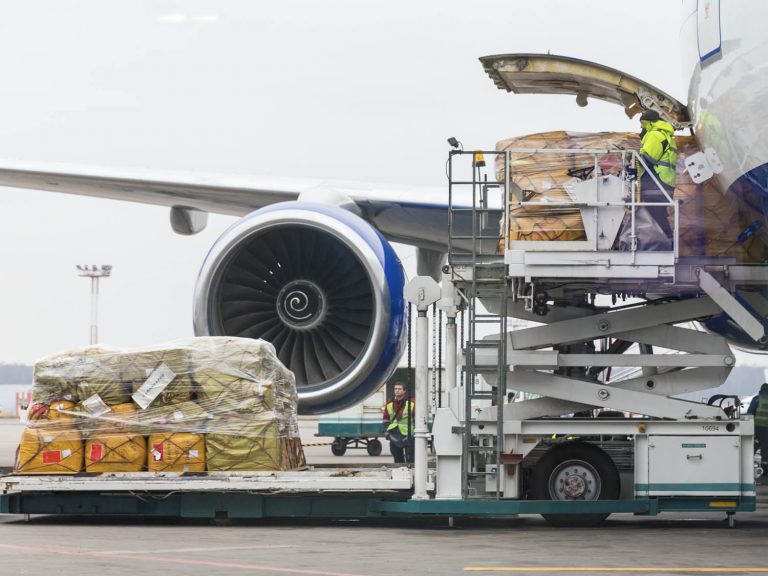
Date:
Air freight airports and ground handling hubs grinding to a halt – and that’s everywhere
Sustained high demand, diminished capacity, COVID-safe work practices and apparent labour shortages, continue to place immense pressure on UK, European, US and global air freight hubs, creating congestion, from Heathrow to Azerbaijan.
While there are different situations at different airports, the demand for air cargo is exceptionally high and ground-handling operations are proving to be consistently ineffective at servicing the upturn in freighters, and passenger freighters, with particular problems at Heathrow, Amsterdam, Brussels, Frankfurt and Liege. And that’s just in Europe.
Despite the significant congestion that is impacting air cargo hubs globally, there is every likelihood that the already exceptionally high air freight prices will climb further as supply chain congestion drives further ocean-to-air conversion for essential peak inventory. ‘Distressed ocean freight’ has one repair option on the deep-sea destinations and origins and that is conversion to air freight which we are seeing daily driven by consumer and manufacturing demand chains needing stock, inventory and components to function.
The resumption of passenger operations in the critical trans-Atlantic market is very welcome, but trans-Atlantic supply has little impact on the China outbound routes that comprise the bulk of holiday peak volumes and it is not expected to result in a sudden easing of the essential air cargo market. Many aircraft were already flying routes that were profitable from cargo alone. It is just that they will now finally fill up the upper decks of the aircraft as traveller restrictions are withdrawn and they are allowed to resume global access and passenger sentiment in flying begins to resume.
London Heathrow is facing significant delays, as the cargo area is unable to cope and waiting times for vehicle collections and deliveries can be anything from five to ten hours, with the ever-present risk that the driver will ultimately be turned away. We are experiencing drivers running out of their legal hours of driving and having to replace with new shift drivers before they have even collected or delivered their air freight cargo whilst sitting statically outside the airline warehouses at the airports.
We are aware that some handling agents are moving airline pallets to London Gatwick to break down and return loose cargo to Heathrow. In theory, this practice should ease ground-handling pressure at Heathrow, but in practice, it actually adds further delays and increases the risk of cargo being misplaced.
It is beyond frustrating to locate and secure scarce air freight space, to get our customers’ consignments to destination on time, only for them to be delayed on arrival by 2, 3, 4 and even 5 days as we attempt the final mile of delivery.
The situation can only be described as discombobulating and illogical. But unfortunately, this is the reality of the air freight supply chain presently, as widely reported in the trade press over recent days and weeks.
Whenever possible we are routing cargo via Birmingham International Airport, which continues optimum operations, to keep our customers’ goods moving, as well as clearing cargo and moving it to our general-purpose and various external temporary storage facilities (ETSF’s).
Overall the market is not as good as it should be, with issues all over the place at the major US, European and Asian hubs and the likelihood is it will get worse, particularly when the handlers are short-staffed in many facilities, due to COVID operating restrictions and the ability to ensure that resource can be deployed for the surge in demand.
In their defence, ground-handlers maintain that airline schedules and capacity are constantly shifting, which restricts their ability to forecast requirements and means that they cannot ensure there are sufficient numbers of handlers to meet the arriving and departing aircraft that they would expect with schedules during ‘normal times’. This actually reflects the ongoing situation in the ocean freight market with the circumstances that everyone will be experiencing in surface mode over the last year. However, during the current peak season, this is now filtering into the air freight environment.
They also suggest that they are unable to flex their prices like the airlines and while lots of money is being generated on air cargo, it’s not in handling, where the cost base has gone through the roof but pricing and revenue have remained relatively static.
Predictions are that the air cargo boom will continue well into next year, and possibly 2023, as it may take that amount of time for the passenger schedule to return to pre-COVID levels.
We know that cargo that ends up in limbo in on-airport warehouses exacerbates the congestion crisis, but quickly moving cargo off-airport depends on a ground-handling workforce that is of sufficient size to provide efficient operations to the cargo aircraft, preighters and PAX aircraft arriving at those major cargo hubs.
Despite the massive challenges, our air freight team continue to get time-sensitive shipments lifted at origin and work tirelessly to have it released asap after arrival. As soon as we identify an issue, regardless of the airport, we work around the problem to deliver the best solution and avoid obvious bottlenecks and turmoil.
We partner and engage closely with our global network to monitor market capacity and identify opportunities to use regional airports, that will benefit our customers ensuring that expectations and timelines are met – regardless of the challenges.
There are solutions for every critical shipment, please call Elliot Carlile or Grant Liddell to discuss your situation and for further insights and advice. We will have all options available and an intelligent and creative remedy!
